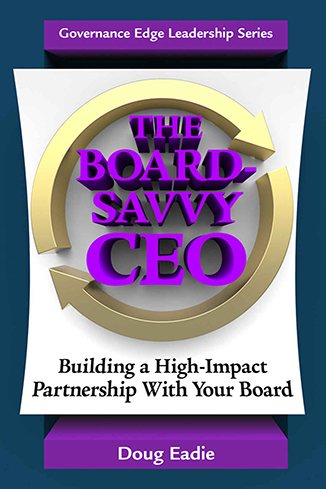“This feels wrong in so many ways. It feels reckless, careless and selfish. Of course we’re supposed to wait until we’re sure before we buzz. But the waiting leads to a pattern of not buzzing.” I’m quoting from Seth Godin’s recent post at Seth’s Blog, “Buzzer Management.” Reflecting on his failure to make the high school quiz team, which he ended up coaching because he didn’t recognize the importance of pressing the buzzer before being sure he had the right answer, Seth makes the point that hesitating because you aren’t sure of the answer can come at a high price – usually higher than the cost of getting the answer wrong.
Reading “Buzzer Management” a couple of days ago got me to thinking about my work with nonprofits over the past quarter-century in leading what I call “out of the box” change. As you’ve no doubt learned from your own experience, you can get a tremendous amount of important change accomplished through your tried and true annual operational planning process – by tweaking existing programs and services (for example, re-designing your annual meeting to increase the number of less structured, interactive sessions). But as you well know, at any given time your organization will face issues (both opportunities to grow and challenges that might cause real harm) that you wouldn’t want to handle through business-as-usual planning because they’re too complex (not just technically, but often politically) and high-stakes for mere tweaking. They call for out of the box change initiatives. For example, an association I worked with recently is considering launching a change initiative that will diversify and enrich the composition of its board in order to strengthen the board’s leadership in growth-focused strategic planning. Another nonprofit I’m working with is close to launching an initiative to merge (really acquire) a sister organization in order to boost its competitiveness and strengthen its capacity to capitalize on opportunities to grow in terms of both clients and revenues. Neither of these initiatives could by any stretch of the imagination be accomplished by merely tweaking what’s already going on.
So what does this have to do with Seth’s hitting the buzzer? Well, over the years I’ve seen more than a handful of really critical out of the box change initiatives bite the dust because board members and the CEO were so worried about the possibility of failing that they didn’t take action – hit the buzzer – in time to capitalize on the opportunity or counter the threat. They fell into the trap of collecting more and more information and doing more and more analysis in a futile quest for certainly. In today’s world of dizzying change, failing to hit the buzzer can come at a steep price: failing to grow and eventually declining – or maybe even going out of business.






